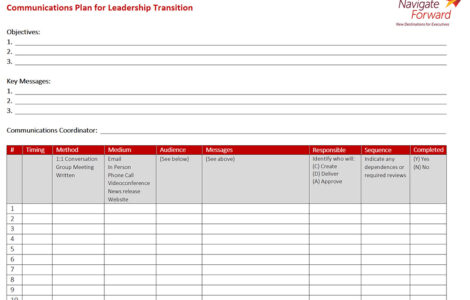What’s next?
If you’re a CEO contemplating retirement—or the HR leader whose job responsibilities include succession planning for the C-suite—those two little words are likely keeping you up at night.
That’s because figuring out “what’s next” at the end of a successful corporate career can be anything but easy.
Legacy planning helps departing executives move forward with confidence and intention
In fact, the inability of seasoned executives to envision a life after the corner office can cause all kinds of headaches:
- Well-meaning leaders delay retirement.
- HR struggles to retain and advance the next generation of leaders.
- The talent pipeline clogs. All involved become frustrated.
In worst-case scenarios, a storied corporate career ends with a pink slip and forced exit, rather than the gold watch and fond farewell both sides would prefer.
Normalize Departure Planning and Collaborate With Executives
Change starts by normalizing legacy planning, celebrating longevity and putting organizational support behind valued executives as they plan their next chapter. Working together—proactively and openly—ensures a smooth transition for the outgoing leader, incoming successor and the organization.
Effective succession planning can:
- Eliminate confusion, anxiety and stress for the company
- Protect your employment brand with a positive experience for departing leaders
- Ensure full cooperation and knowledge transfer across the organization
- Clear a path to advance and retain the next generation of company leaders
Figuring out “what’s next” at the end of a successful corporate career can be anything but easy
Yet making it happen is another story. Stereotypical thinking about retirement doesn’t help. Not every executive wants to trade the respect, identity and pace of a leadership role for days of golf, grandchildren and travel. Even the right age to retire varies greatly.
Helping outgoing executives see their options, identify their passions and define a clear path enables the entire organization to move forward. Departing executives get excited about new adventures. The company benefits from a proactive and well-planned departure with an engaged and responsive executive.
How HR Can Keep Succession Planning on Track
To unclog your organization’s talent pipeline, consider these changes:
1. Communicate Openly
Instead of waiting for executives to announce their plans (or worse, having to terminate a longstanding leader), make succession planning a regular occurrence. Encourage conversations about career goals, retirement aspirations and potential timing with all employees over a certain age or years of service. The more you can show senior staff that you’re an ally in their decision-making, the better your chances of a smooth transition when the time comes.
2. Evaluate Retirement Policies
Rethinking your corporate policies can change your outcomes. Your stance on benefits, mandatory retirement age or paid board service may be producing unintended consequences. Consider allowing part-time work after a full-time career, or access to trained financial planners who can help older employees evaluate their readiness to retire.
3. Offer Support For an Encore Chapter
Few executives want to walk away from their corporate career entirely. Most want to continue adding value by joining a corporate board, becoming active in a non-profit, or sharing their knowledge through teaching or speaking. Helping leaders prioritize these goals—as well as family, hobbies, travel and other leisure pursuits—puts structure and excitement around “what’s next.” In turn, leaders have confidence and motivation to leave well. Planning typically begins 12-24 months before departure.
Few executives want to walk away from their corporate career entirely; most want to continue adding value
4. Make Offboarding Gradual
Stepping away from a leadership role doesn’t need to be an “all or nothing” proposition. Consider a transition period that allows part-time work or the opportunity to mentor junior employees. Some companies retain retired staff as brand ambassadors who use their immense knowledge of the business and wide professional networks to recruit new talent. All help streamline transition.
5. Celebrate Planned Exits
Company culture plays an important part in how leaders view retirement. If there’s little fanfare or communication around important career milestones, it’s unlikely that those contemplating departure will speak up and help the organization plan their exits. Find ways to recognize accomplishments, generate pride and bring closure to a lengthy corporate career.
Outside Expertise to Help Executives Leave Well
A Legacy Planning engagement from Navigate Forward helps your company and departing executives move forward with confidence and intention. Our one-on-one process matches each leader with a peer-level consultant who guides the discovery, planning and transition process, providing the HR team an external partner to support a critical change.
This in-depth work brings clarity to the executive’s future, enables them to serve as a resource for their successor and supports them in achieving their goals for the future.
Ready to revamp your support for leaders considering retirement? Contact us to learn more about Legacy Planning.



